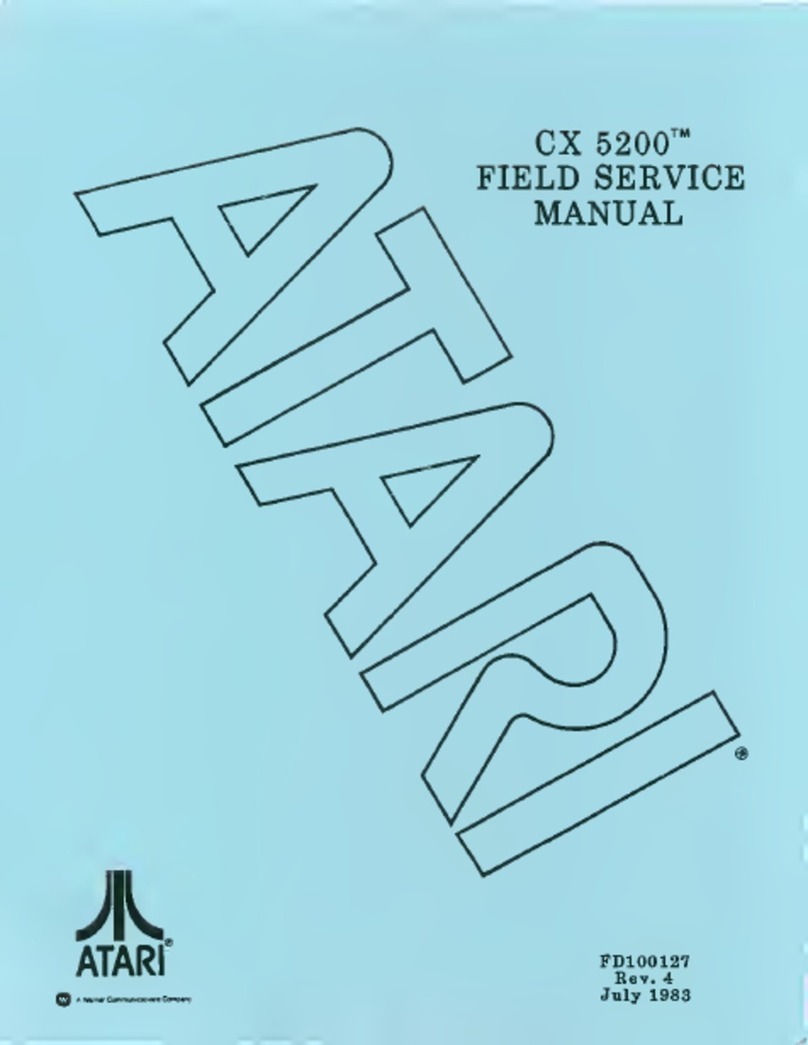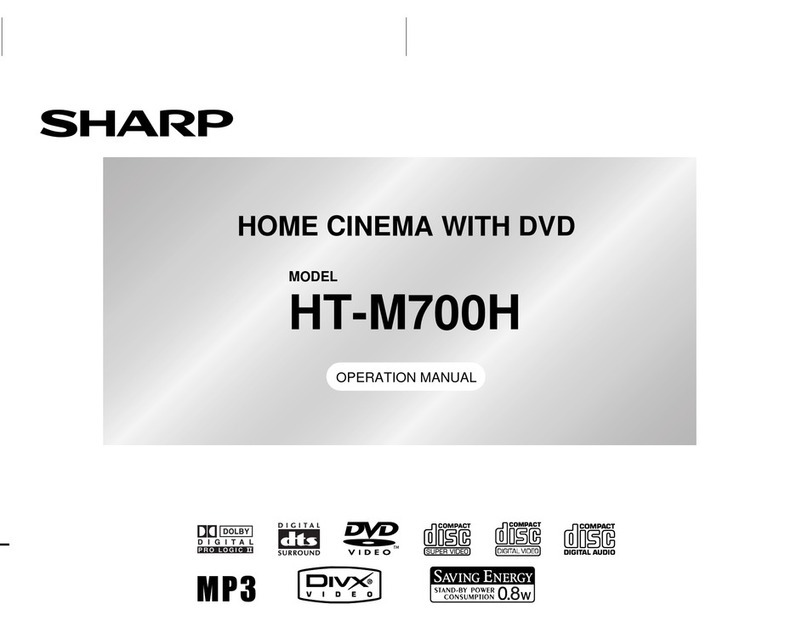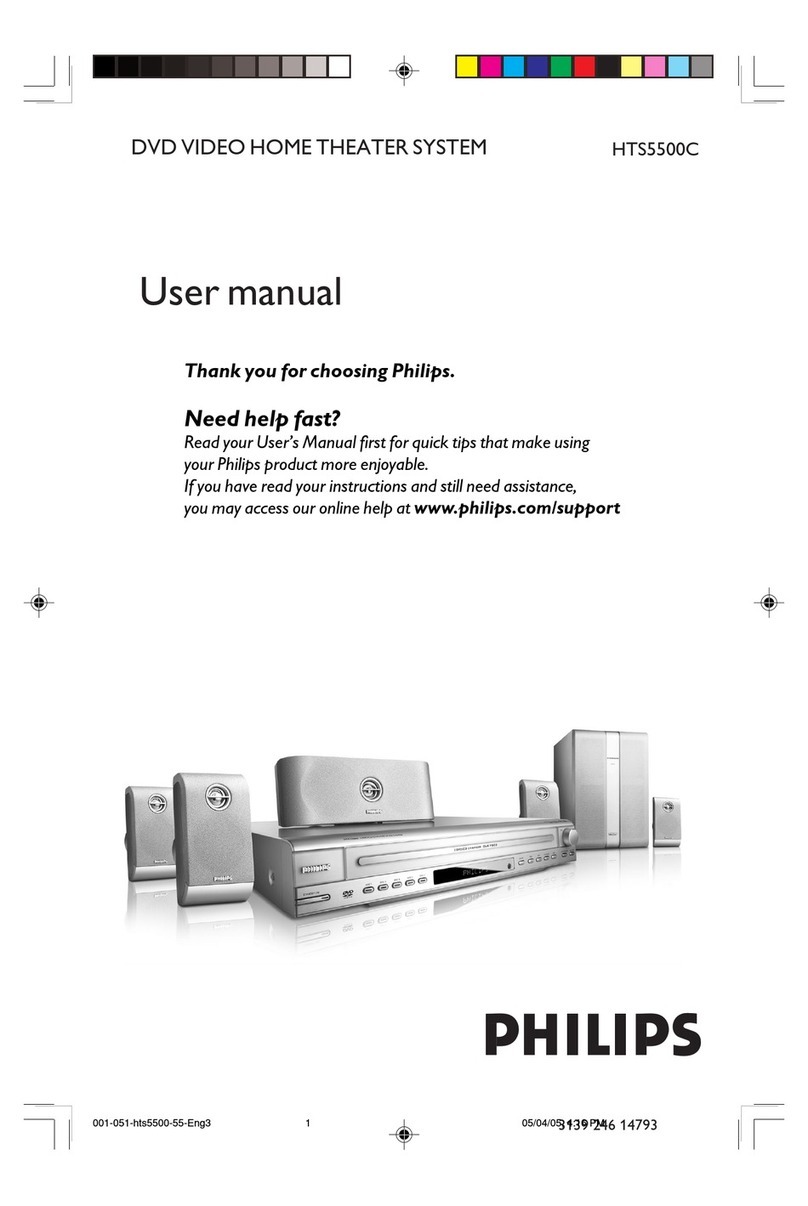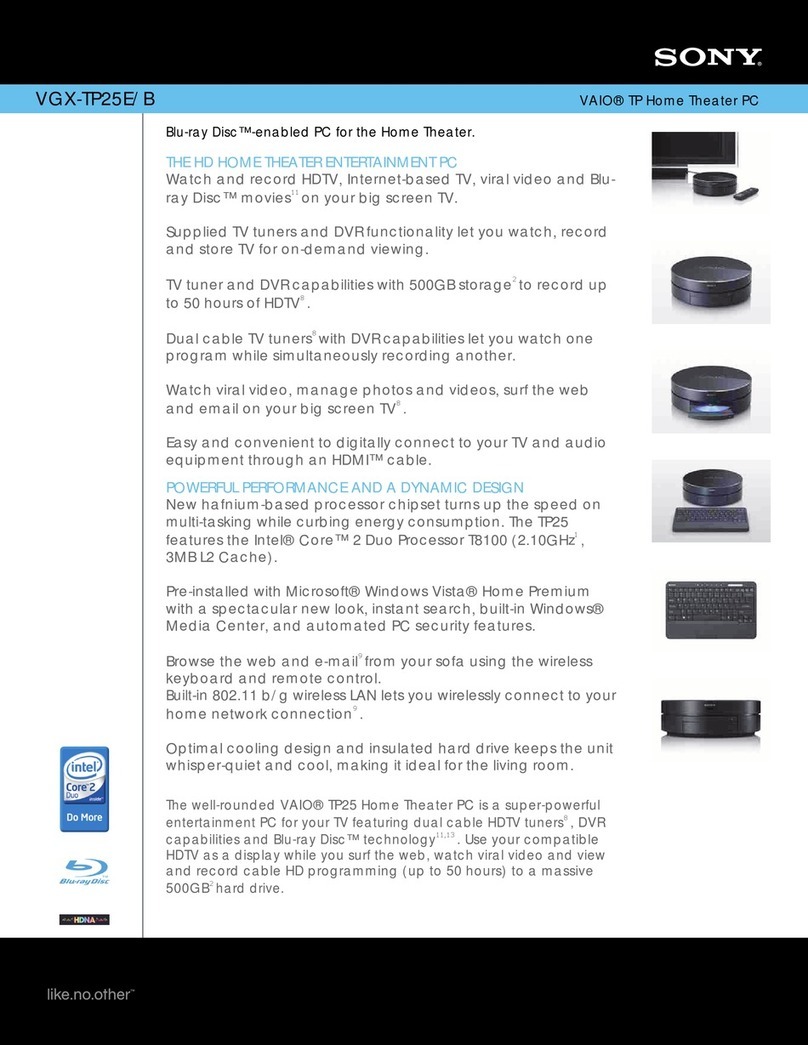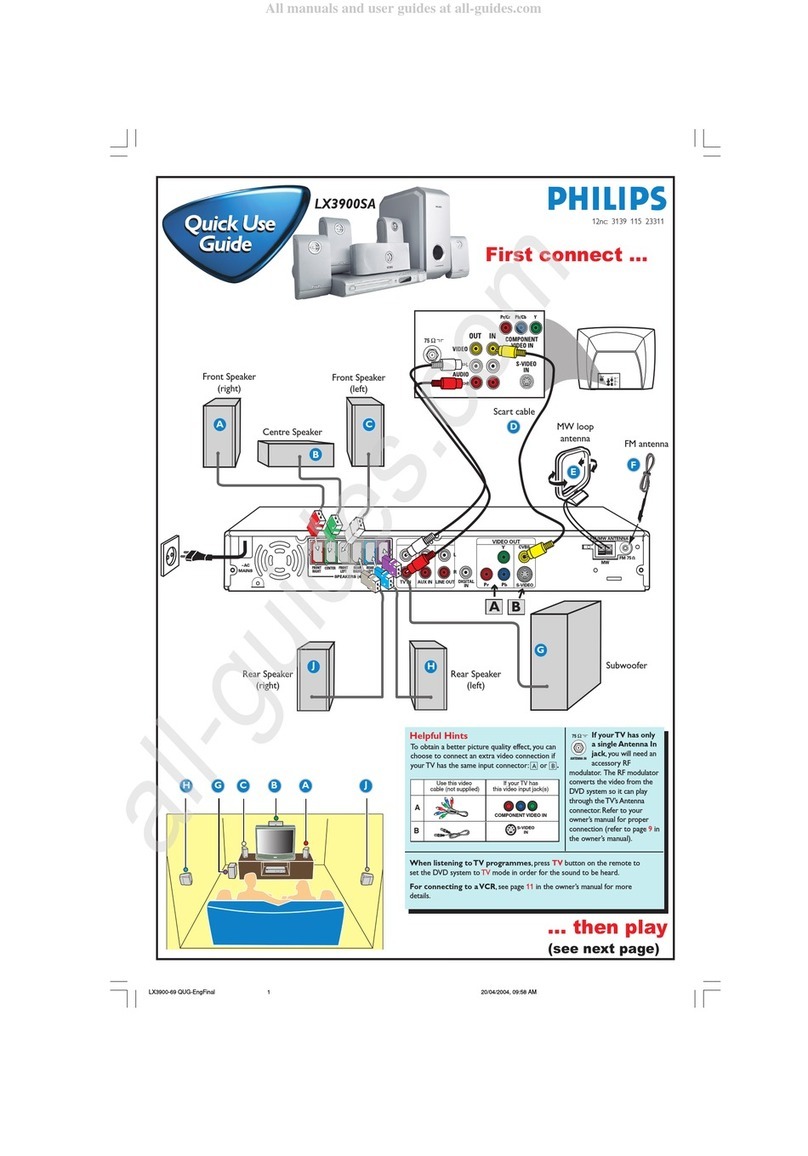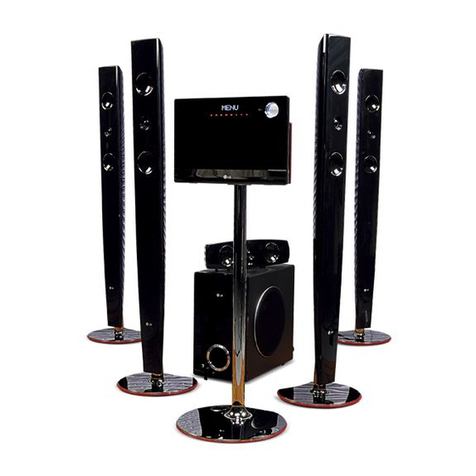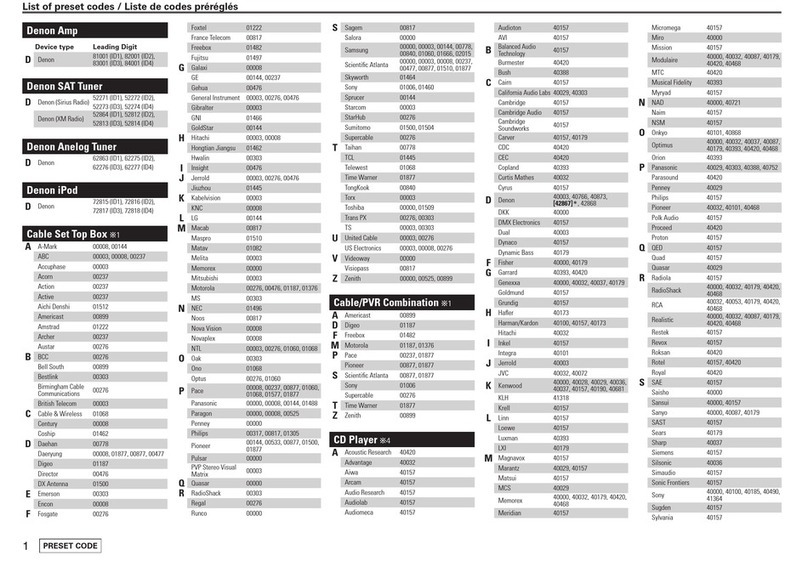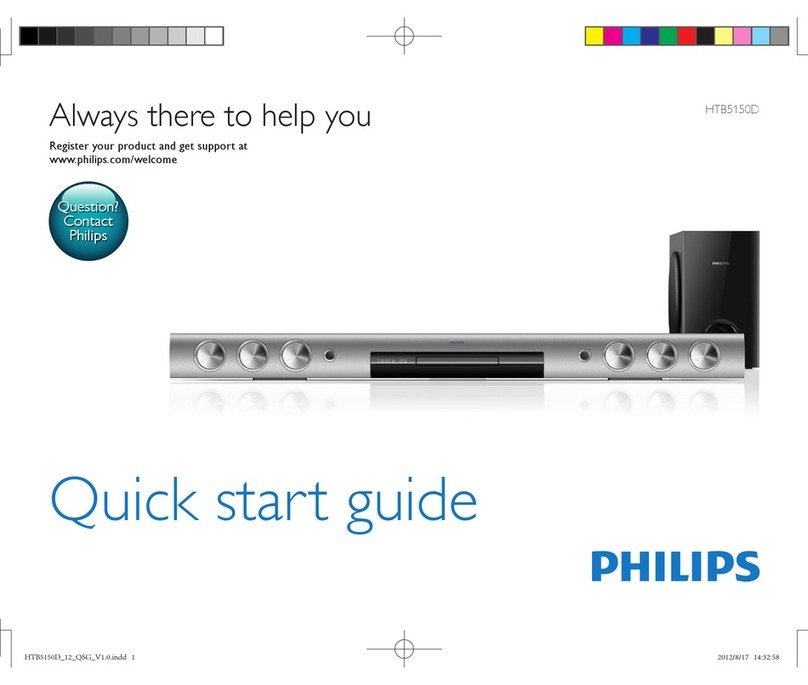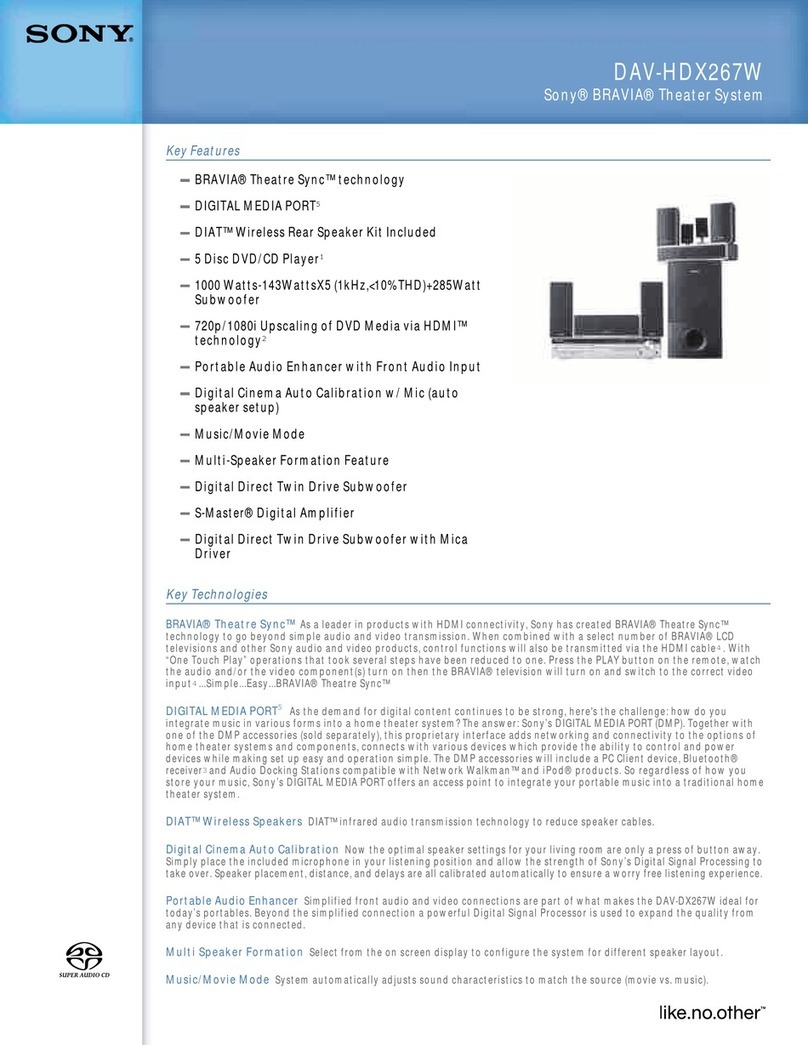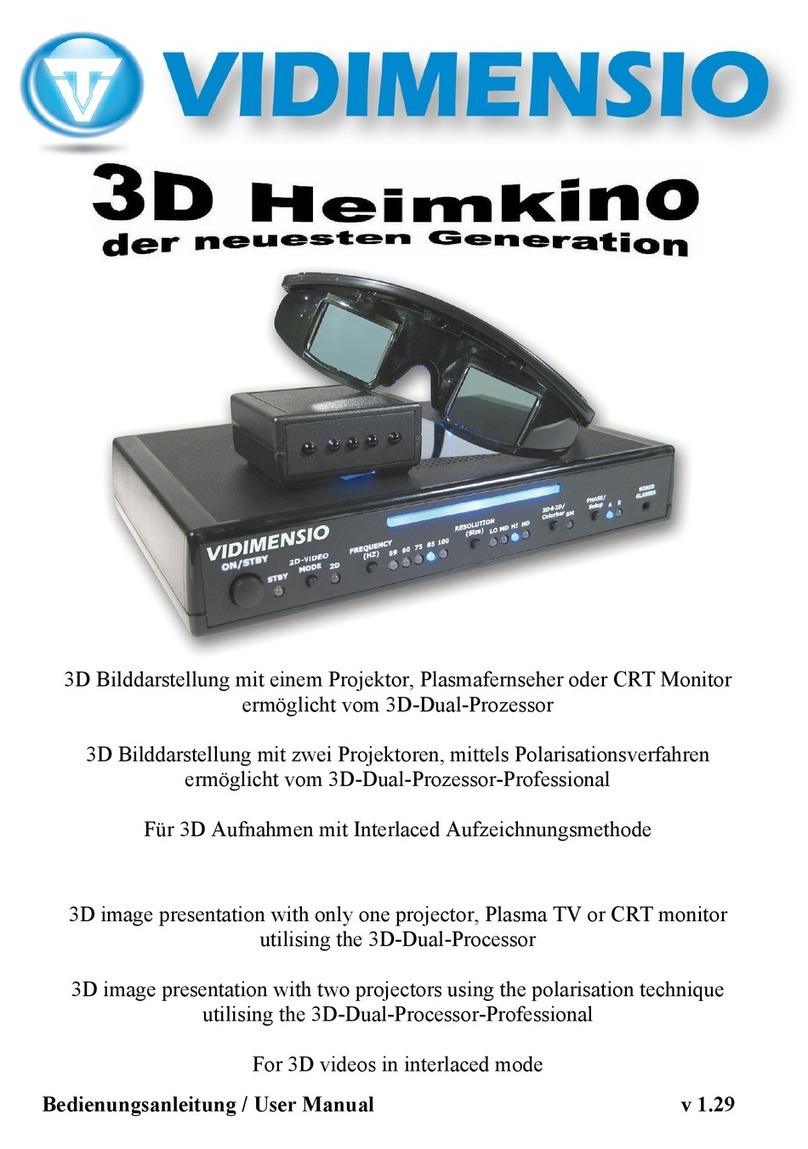Atari CX Quick start guide

ATARI
ADVANCED
VIDEO
ENTERTAINMENT
SYSTEM
MODEL
5200TM
FIELD
SERVICE
MANUAL

A
tari believes that the information described in this manual is accurate and reliable,
and much care has been taken in its preparation. However, no responsibility, financial
or otherwise, shall be accepted for any consequences arising out of the use of this
material. Information
contained
herein is subject
to
change. Revisions
may
be issued
.
to
advise of
such
changes and/or additions.
Correspondence regarding this document should
be
forwarded to Director of Technical
Support, Consumer Product Service, Atari, Incorporated,
845
W.
Maude, Sunnyvale,
California
94086.

TABLE
OF
CONTENTS
Title
-
Page
Section
INTRODUCTION
THEORY
OF
OPERATION
Overview
Model
5200
Console
Four-Port Universal
PCB
differences
Two-Port Universal PCB differences
Outer Case
RF
Shield
PC
Board
Microprocessor Chip
-
MPU
Alphanumeric Television Interface
Controller (ANTIC)
Graphic Television Interface Adaptor (GTIA)
Pot Keyboard Integrated Circuit
(POKEY)
Switchbox
Game Controller
SILKSCREENS
AND
SCHEMATICS
4-PORT
MODEL
5200
TESTING
Equipment Requirements
Testing with the Diagnostic
Cartridge (Version
1
.l)
Overview
of
Tests
Initialization
Power-up Screen
Solid
(Black)
Colored Screen or
Vertically Lined Screen
Snowy Screen
Warped-Ragged Picture
Color
Bar
Test
Gray
Bar
Test
Any Video Screen
Pokey Adjust
Error
Summary
RAM
Test
Verify
ROM
Port Test
Tone
Test
&
-
CX5200
Field
Service Manual iii Changed
by
ECN
/I0036
6/21
/83

TABLE
OF
CONTENTS
(Continued)
Section
Title
-
2-PORT MODEL 5200 TESTING
Equipment Requirements
Testing with the Diagnostic Cartridge
(Version
1.1)
Overview of Tests
Initialization
Power-Up Screen
Solid Colored (Black) Screen or
Vertically Lined Screen
Snowy
Screen
Warped-Ragged Picture
Color Bar Te
Gray
Bar
Test
Any Video Screen
Verify OS
ROM
Tone Test
POKEY (Port) Test
RAM Test
POKEY Adjust Test
POKEY Softfire Test
4-PORT
5200
DIAGNOSTIC FLOWCHART
Overview
The Swapout Procedure
Replace in Order
ATARI Repair Hotline
2-PORT
5200
DIAGNOSTIC FLOWCHART
S
wapout Procedure
Replace In Order
ATA
RI
Repair Hotline
4-PORT 5200 SYMPTOM CHECKLIST
2-PORT
5200
SYMPTOM CHECKLIST
GAME CONTROLLERS
Overview
Joystick
Key Pad
Fire Buttons
Select Buttons
CX5200
Field
Service Manual

TABLE
OF
CONTENTS
LIST
OF
f
LLUSTRATIONS
Figure
Table
-
3-1,
6-1
7-1
Title
-
Color Bars Screen
Gray Bar Screen
Any
Video Screen
Pokey Adjust Test Screen
Error Summary
Color Bars Screen
Gray
Bar
Screen
Any
Video
Test
Screen
RAM
Test Screen
POKEY Adjust Test Screen
CX52 Game Controller
Joystick Positions
1
&
2
Cable Connector Pins (End View)
Pot
&
Arm Assembly
Controller Top (Underside)
Select Switch Bezel Removal
Controller Knob Removal
Pot
.Arm
Positions for
Assernbly
CX52
Game
Controller Schematic
Top Cover Assein
bly
Bottom Cover
Assembly
Trakball Block Diagram
Diagonal or Circular Motion
Cue Ball Support
Top
Cover (Underside)
Main
PC
Board
LIST
OF
TABLES
Title
-
Diagnostic Error Codes
Game
Controller Continuity Check
Keyboard Test Display
Page
Page
CX5200 Field Service Manual

INTRODUCTION
The Atari Advanced Video Entertainment System (Model 5200) Field Service Manual is
a
reference guide for you, the service technician.
This Field Service Manual is organized in twelve sections:
a
THEORY
OF
OPERATION
-
Overview of how the Model 5200 works and what
its basic assemblies look like.
SILKSCREENS
AND
SCHEMATICS
-
Electrical drawings and layouts of
all
of
the Model 5200 printed circuit boards.
4-PORT 5200 TESTING
-
Review of Diagnostic Tests available for diagnosing
4-Port Model 5200 problems.
2-PORT 5200 TE!jTING
-
Review of Diagnostic Tests available for diagnosing
2-Port Model 5200 problems.
a
4-PORT 5200 DIAGNOSTIC FLOWCHART
-
Aids for troubleshooting the 4-
Port Model 5200.
2-PORT 5200 DIAGNOSTIC FLOWCHART
-
Aids for troubleshooting the
2-
Port Model 5200.
0
4-PORT
5200
SYMPTOM
CHECKLIST
-
Failure information to assist the
experienced technician arrive at a rapid diagnosis of 4-Port Model 5200
problems.
a
2-PORT
5200
SYMPTOM
CHECKLIST
-
Failure information to assist the
experienced technician arrive at a rapid diagnosis of 2-Port Model 5200
problems.
0
GAME
CONTROLLERS
-
Overview of hand controller construction with
electrical schematics and recommended test and repair procedures.
TRAKBALL CONTROLLER
-
Overview of trakball construction with
electrical schematics and recommended test and repair procedures.
PARTS LET
-
Detailed breakdown of all parts used in the 4-Port and 2-Port
models.
a
SERVICE
BULLETINS
-
Section to be used to hold Field Change Orders,
Upgrade Bulletins and Tech Tips.
This manual is designed for use
by
both the experienced and inexperienced service
technician. The Diagnostic Flowcharts (Sections
4
and
4A)
provide detailed procedures
for technicians not completely familiar with the 5200 models. The Symptom Checklists
(Sections
5
and 5A) provide a rapid reference for the more experienced technician.
I
b
CX5200 Field Service Manual vii Changed
by
ECN {I0036
6/21
183

SECTION
1
THEORY
OF
OPERATION
Overview
The ATARI Advanced Video Entertainment System (Model 5200) is an advanced
microcomputer. It receives input from the game controllers, Read-Only-Memory
(ROM) cartridges and other peripherals, and displays this input on
a
T.V. screen.
A
maximum of four players may play at one time.
The
Model
5200
is composed of the console, switchbox and game controllers.
The
following paragraphs provide
a
general discussion of each of these items and their
component parts. For
a
detailed discussion of the Game Controller see SECTION
6.
Model
5200
CONSOLE
The Model 5200 console is composed of
an
outer plastic
case
which houses the
PC
board and its
RF
Shield. Figure 1-1 shows the console and its parts.
There
are
currently
three
different
PC
Boards
being
used
in
Model
5200
consoles.
Some
models
contain
the
original
4-port
PC
Board, number CA018087.
Other
consoles
contain
a
4-port
universal
PC
krd,
number
CA020108. A third
PC
Board
with
only
two
player
ports,
number
CA021374,
is
also
available.
Unless
otherwise
specified,
the
references
in
this
manual
pertain
to
the
original 4-port
PCB,
number
CA018087.
The
specific
differences
of
the
4-port
universal PCB
and
the
2-port universal PCB
are
called
out
below.
Four-Port
Universal PCB
differences
External
The ATARI serial number on the bottom of the unit will have
a
+
as
its third
designator.
For
example:
CITE
CODE
DATE
Q-PORT
DESIGN
ATOF
The chip designators have been changed. All chips are designated
A
instead of
U.
Two 74LS244 ICs
(U4
and U15) were removed from the
PC
Board.
Two 74LS244 ICs (Ul4 and U28) were replaced with a 74LS125 (Al4) and
a
74LS51 (A15).
Provisional circuitry for future expansion has been added in order to
accommodate the
vcsTM
cartridge adaptor.
CX5200 Field Service Manual
1-1
Changed by
ECN
/I0036
6/21
/83

Two-Port Universal
PCB
differences:
-
I)
All of the 4-port universal board differences listed above
are
included
on
the 2-port universal PCB.
2)
Ports
3
and 4 and their associated discrete components have been removed.
3)
ICs
A1
2
and
A1
3
have been removed.
4) The automatic switchbox has been replaced with
a
manual switchbox and
the
RF
cable has been replaced with the standard
RF
cable.
5)
The
power
adaptor
plugs directly into the rear of the console instead of
plugging into the switchbox.
Carrridqe
Player
POI
Figure
1-1.
Model
5200
Console (4-PORT)
CX52C10
Field Service Manual
1-2

Outer
Case
The outer
case
consists of a bottom and
a
top plastic cover which are held together by
five Phillips-head screws.
At the rear of the bottom plastic cover (Figure
1-2)
is:
a)
an opening for
access
to the channel
2-3
switch
b)
a
removable door which allows
access
for future development.
In the base
is
a
cable wrap post for
RF
cable storage.
I
I
t
/
/
Channel
2-3
Future Development Access
Figure
1-2.
Channel
2-3
Switch and
Future Development Access
The top plastic cover provides:
1)
openings
at
the front for the four player ports
2)
the power switch cover
3)
the power
ON/OFF
switch
4)
a storage area
at
the rear for two game controllers. The hinged cover for
this area comes off
as
a
separate piece when the top cover is disassembled.
RF
Shield
An
aluminum shield covers the
PC
Board and prevents the
PC
Board from generating
interference on the T.V. screen.
CX5200
Field Service Manual
1-3
Changed
by
ECN
#0036
6/21/83

PC
Board
-
I
The
console
you
are
servicing
may
contain
either
the
original
PC
Board
Number
CAOL8087
or
the
newer
PC
Boards
Numbers
CA020108
or
CA021374.
See
Page
1-1
of
-
this
manual
for
an
explanation
of
the
three
board's
differences.
The
PC
Board consists
of:
r
28 Integrated Circuit
Chips
on
PC
Board Number CA018087;
26
Integrated
Circuit Chips on
PC
Board Number
CA020108;
24
integrated Circuit Chips
on
PC
Board Number
CA021374.
a cartridge socket
an
RF
module
various discrete components
The
major
chips
on
the
PC
Board are:
Microprocessor
Chip
-
MPU
The microprocessor
(MPU)
is the brain of the
5200.
It
makes
the
major decisions
based on information from the
ROM
cartridge
and
the Random Access Memory.
Figure
1-3
shows the
pin
assignments for the
MPU.
VSS
ROY
P
1
m
N.C
-
NMI
YNC
VCC
AU
A1
A2
'
A3
A4
AS
A6
A7
AS
A9
A10
'
A
11
HALT
Figure 1-3.
MPU
Pin Assignments
CX5200
Field
Service
Manual
1-4

Alphanumeric Televison Interface Controller (ANTIC)
The
primary function of the Alphanumeric Television Interface Controller
(ANTIC)
chip is to get data from memory, independent of the processor, for display on the
video screen.
Figure
1-4
shows the pin assignments
for
the ANTIC.
GROUND
GTIA
DATA
GTIA DATA
Light
Pen
GTIA
DATA
N0.t
Connected
Interrupt Output
~efresh
HALT
Address
Bus
Address
Bus
Address
Bus
Address
Bus
Read/Write
Ready
Address
Bus
Address
Bus
Address
Bus
Address
Bus
Address
Bus
VSS
.4
NB
AN
1
c?
AN2
RNMl
A3
A2
A
1
Ad
R/W
RDY
A10
A12
A13
A14
A15
D4
D5
06
07
RFT
FPhg
pwf
D3
02
Dl
DB
Ph2
A4
A5
A6
A7
A8
A9
All
VCC
Figure
1-4.
ANTIC Pin Assignments
CX5200
Field Service
Manual
Data
Bus
Data
Bus
Data
Bus
Data
Bus
Reset
Fast
Phase
0
Clock
Phase
0
Clock
Data
Bus
Data
Bus
Data
Bus
Data
Bus
Phase
2
Clock
Address
Bus
Address
Bus
Address
Bus
Address
Bus
Address
Bus
Address
Bus
Address
Bus
5V
Power

-
Graphic Television Interface Adaptor (GTIX)
-
The Graphic Televison Interface Adaptor
(GTIA)
chip retrieves graphics data from
memory
via the ANTIC
DMA
process. This data is routed to the GTIA graphics
registers. Figure 1-5 shows the pin assignments for the GTIA.
Address
Bus
Address
Bus
Ground
Data
Bus
Dara
Bus
Oata
Bus
aata
Bus
Trigger
0
Trigger
1
Trigger
2
Trigger
3
Port
Select
Port
Select
+CAP
Control
Not
Used
Not
Connectad
Color
Delay
Alphanum-
Data
0
Alphanum.
Data
1
Alphanum-
Data
2
A1
A%
VSS
03
D2
Dl
Yf.
T1
T2
T3
sff
.
S1
s2.
53
..
DEL
AN0
AN
1
AN2
0
GTIA
A2
A3
A4
Dk
D5
06
D7
R/Y
m
LUM
o
a2
Fa'0
OSC
VCC
HALr
CSY
NC
LUM
3
LUM
2
-
LUt.1
1
COL
Address
Bus
Address
Bus
Address
Bus
Oata
Bus
Data
Bus
Data
3us
Data
Bus
Read/Write
Chip
Select 1
Luminance
o
Output
Phase
2
Input
Clock
Out
e
Oscillator
Input
Power
HALT
q
Output
Sync
Luminance
3
Output
.
Luminance
2
Output
Luminance
I
Output
Color
Figure 1-5. GTIA Pin Assignments
POT
Keyboard Integrated Circuit
(POKEY)
The Pot Keyboard Integrated Circuit
(POKEY)
chip provides the interface between the
'
game
ports and the microprocessor. It also contains four semi-independent audio
channels, each with its own frequency, noise, and volume control. Figure
1-6
shows
the pin assignments of
the
POKEY.
CX5200
Field Service Manual

Ground
Data
Bus
Data
Bus
Data
Bus
Data
Bus
Data
Bus
Phase
2
Clock
Pot
Scan
Pot
Scan
Pot
Scan
Pot
Scan
Pot
Scan
Pot
Scan
Pot
Scan
Pot
Scan
Softfire
5
V
Power
Not
Connected
:<ey
board
Scan
Keyboard
Scan
e
VSS
03
D4
D5
D6
07
#2
P6
P7
P4
P5
PZ
P3
PO
VCC
-
K5
i(4
K3
0
POKEY
D2
Dl
DO
AUDIO
A0
A1
A2
A3
R/W
CS
1
cso
-
IRQ
SOD
OCLK
BCLK
-
KRl
SID
K(;
K1
-
K2
Data
Bus
Data
Bus
Data
Bus
Audio
Out
Address
Bus
Address
Bus
Address
Bus
Address
Bus
Read/Write
Control
Chip
Select
Chip
Select
Interrupt
Request
Serial
Output
Data
Serial
Output
Clock
Bidirectional
Clock
Xeyboard
Read
Serial
lnput
Data
Net
Cennec*ed
Keyboard
Scan
Keyboard
Scan
Figure
1-6.
POKEY
Pin Assignments
A switchbox is connected and mounted to the back of the television set.
The
switchbox that is used
with
the 4-Port Models
is
different from other switchboxes
manufactured
by
Atari and from the 2-Port Model 5200. These differences include:
1
2)
two Select Switch functions. The two functions are:
NORMAL
-
Allows the Model
5200
to automatically switch between the
television and the
game
when the Model 5200
ON/OFF
switch is pressed.
STANDBY
-
Enables television
viewing
while
the Model
5200
is turned
on.
CX5200
Field Service Manual Changed
by
ECN
/I0036
6/21
/83

GAME
CONTROLLER
The
game
controller supplied with the Model
5200
is composed of an analog joystick,
a
-
12-key Keypad, two separate Fire Buttons on each side, and three Select Buttons. The
game controller is discussed in detail in Section
6.
SUMMARY
The Model
5200
is
an
advanced microcomputer which receives input from
the
Game
Controllers, Read-Only-Memory (ROM) cartridges, and other peripherals. The console
PC
Board
is
housed within an outer
case
and contains four major chips which allow for
interaction between the
game
and
the player. They are:
the
Microprocessor
(MPU),
the Alphanumeric Television Interface Controller
(ANTIC),
the
Graphic Television
Interface Adaptor
(GTIA),
and the
POT
Keyboard Integrated Circuit
(POKEY).
The console, switchbox,
and
Game
Controllers
make
up the
Model
5200
System which
is addressed in the remainder of this manual.
CX5200
Field
Service
Manual

SILKSCREENS
AND
SCHEMATICS
On the following pages are representative silkscreens and schematics for the Model
5200.
Minor variations in design
may
be encountered
depending
on the production date
of the unit, but these schematics provide
all
details required for
an
in-depth
understanding of all Model
5200
units.
CX5200
Field Service
Manual

Make pen
and
ink
corrections to schematics
on
pages 2-4 and
2-4B
as directed below.
1
Page
2-4
,a
Remove connector line
I
I
T-
I
I
-
I I
1;
IT.
shown
as
dotted line.
Page
2-4B
Page
2-40
Change
U298
I
Page
2-4B
T
Add
ca~acitor
Page
2-48
Add
SF3
between
+CAV
and
+5V
on
Port
4.
CX5200
Field
Service
Manual


This manual suits for next models
1
Table of contents
Other Atari Home Theater System manuals


